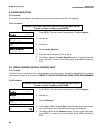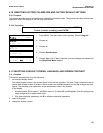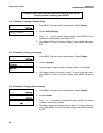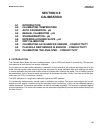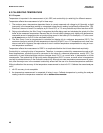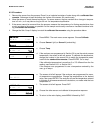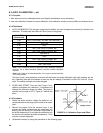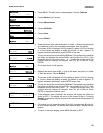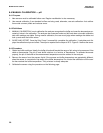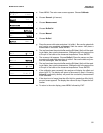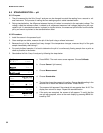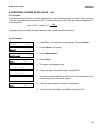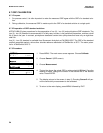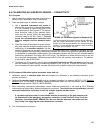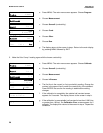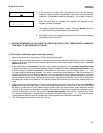
50
MODEL SOLU COMP II SECTION 6.0
CALIBRATION
6.4 MANUAL CALIBRATION — pH
6.4.1 Purpose
1. New sensors must be calibrated before use. Regular recalibration is also necessary.
2. Use manual calibration if non-standard buffers are being used; otherwise, use auto calibration. Auto calibra-
tion avoids common pitfalls and reduces errors.
6.4.2 Definitions
1. MANUAL CALIBRATION. In auto calibration the analyzer recognizes the buffer and uses the temperature-cor-
rected pH value in the calibration. The analyzer also measures noise and drift and does not accept calibration
data until readings are stable. During manual calibration, the user must judge when readings are stable and
look up and enter the buffer values.
2. SLOPE AND OFFSET. Once the Solu Comp II successfully completes the calibration, it calculates and dis-
plays the calibration slope and offset. The slope is reported as the slope at 25ºC. Figure 6-1 defines the terms.
6.4.3 Procedure
1. Obtain two buffer solutions. Ideally, the buffer pHs should bracket the range of pH values to be measured. Also
obtain a thermometer. The pH of most buffer solutions is a function of temperature. To calibrate the sensor
properly, the pH of the buffer at the measurement temperature must be entered in the analyzer.
2. Remove the sensor from the process liquid. If the process and buffer temperature are appreciably different,
place the sensor in a container of tap water at the buffer temperature. Do not start the calibration until the sen-
sor has reached the buffer temperature. Thirty minutes is usually adequate.
3. Calibrate the sensor using the procedure on the following page.



